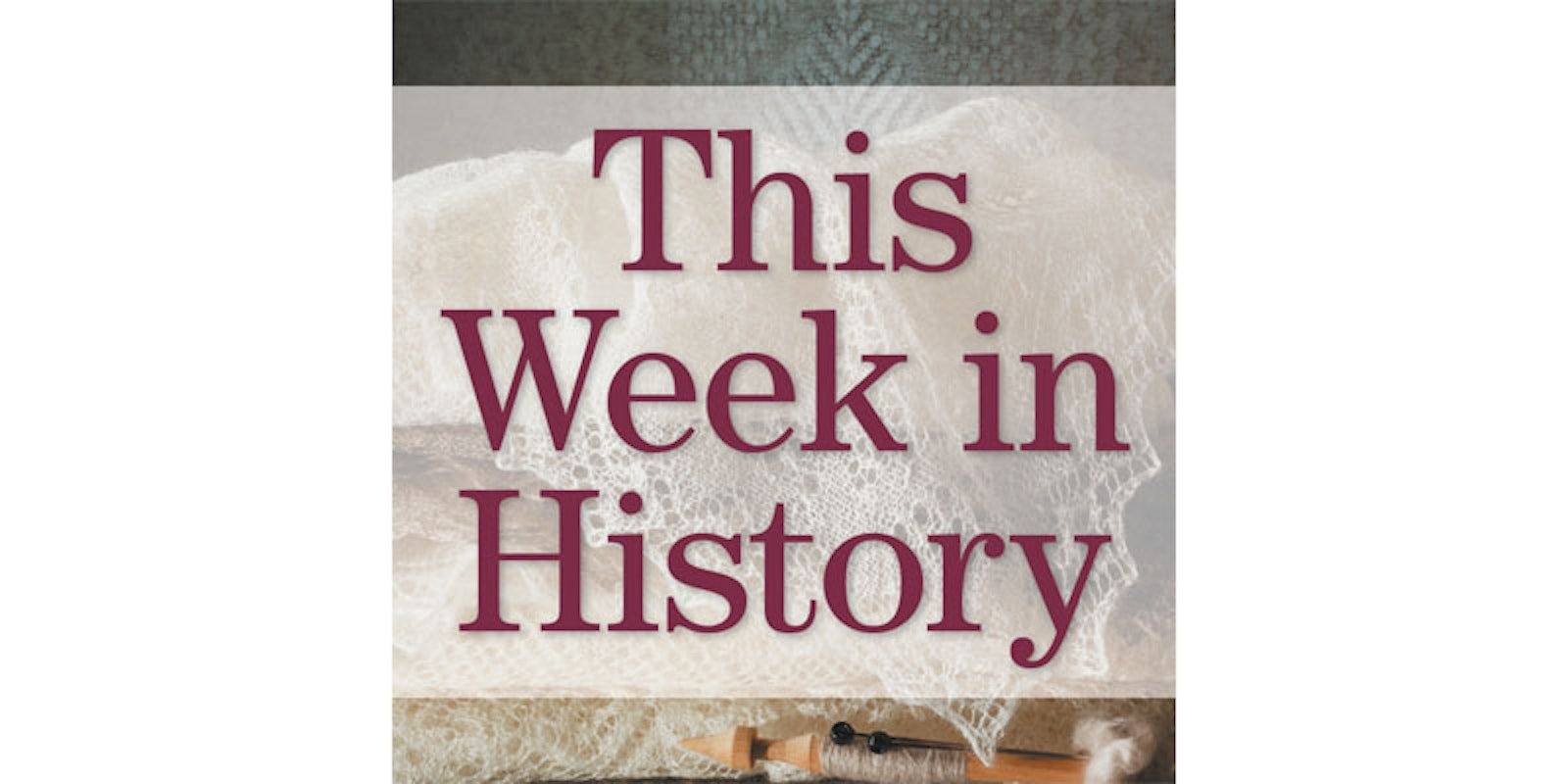December 14, 1542 Princess Mary Stuart becomes Mary, Queen of Scots
Here’s the needlework connection to this date:
 Portrait of Queen Elizabeth I at Wanstead Palace by Mark Gheeraedts (M0012869).
Portrait of Queen Elizabeth I at Wanstead Palace by Mark Gheeraedts (M0012869).
Image courtesy of Wellcome Library, London.
In her article for the September/October 2001 issue of PieceWork, “A Message in Tent Stitch and a Reply: The Politics of Mary, Queen of Scots, and Elizabeth I of England,” Joanne Gaudio explains, “The needlework in question is a piece of needlepoint known today as the Norfolk Panel and displayed at Oxburgh Hall in Norfolk. It was worked in silk tent stitch on canvas about 1570 by Mary, Queen of Scots (1542–1587) during her long incarceration at the hands of Queen Elizabeth I of England (1533–1603). On the surface, the design of Mary’s embroidery seems harmlessly pastoral. A hand descending from clouds holds a pruning knife that has just severed the green but fruitless branch of a grapevine. The border of the piece, as well as other branches of the vine and the trees in the background, abounds in ripe fruit.
 Portrait of Mary, Queen of Scots, including scene from her execution in 1587 by T. Oliver, after T. Houbraken (L0010597).
Portrait of Mary, Queen of Scots, including scene from her execution in 1587 by T. Oliver, after T. Houbraken (L0010597).
Image courtesy of Wellcome Library, London.
Taken in the context of the political turmoil then raging in England and Scotland, the embroidery invites a darker interpretation. It promotes the Catholic view that none of the children born to Henry VIII (1491–1547) after his divorce from Catherine of Aragon were legitimate and so could not succeed him on the throne. Her incarceration made it difficult for Mary to spread written or spoken political propaganda, so the adoption of embroidery as a creative medium was a practical one.”
Intrigue and mystery in Tudor England was the norm; communicating via needlework was perfect. The history, however, didn’t end all that well for Mary—she was beheaded in 1587.
—Jeane

